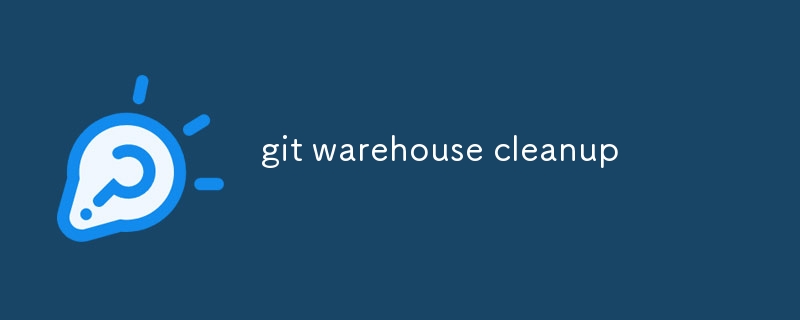
This article provides strategies and tools for identifying and removing unnecessary files from Git repositories to optimize storage space and improve performance. The main issue discussed is the accumulation of dangling objects, large files, and untr

To identify and remove unnecessary files from a git repository, follow these steps:
git gc --prune to remove dangling objects:git gc --prune to remove dangling objects: This command removes objects that are unreachable from any commit. Dangling objects can accumulate over time when you delete branches or commits.git filter-branch to rewrite history: This command allows you to remove or modify specific files from the entire history of a branch. However, it's important to proceed cautiously as it rewrites the history of the repository.git ls-files -s to identify large files and consider moving them to a separate location.git clean -n to list untracked files and git clean -f to remove them.After a merge or branch deletion, follow these cleanup best practices:
git branch -d <branch-name> to delete the branch.git push <remote-name> --delete <branch-name>.git reflog expire --expire=<duration> to prune old entries in the reflog.git reset --hard <commit-hash> This command removes objects that are unreachable from any commit. Dangling objects can accumulate over time when you delete branches or commits.git filter-branch to rewrite history:git ls-files -s to identify large files and consider moving them to a separate location.
git clean -n to list untracked files and git clean -f to remove them.
git branch -d <branch-name> to delete the branch.git push <remote-name> --delete <branch-name>.🎜🎜🎜Prune the reflog:🎜 The reflog records all actions made to the repository. Use git reflog expire --expire=<duration> to prune old entries in the reflog.🎜🎜🎜Reset HEAD:🎜 If you want to revert the repository to a specific commit, use git reset --hard <commit-hash>. This will remove all uncommitted changes and make the specified commit the new HEAD.🎜🎜🎜Automated Cleanup Tools🎜🎜There are several tools and scripts available to automate the cleanup process in git repositories:🎜🎜🎜🎜git-cleanup:🎜 A command-line tool that provides various cleanup commands, such as removing untracked files, empty directories, and reflogs.🎜🎜🎜git-prune:🎜 A shell script that helps prune dangling commits, tags, and branches.🎜🎜🎜git-sweep:🎜 A Ruby script that identifies and removes large, unreferenced files from a git repository.🎜🎜🎜git-annex:🎜 A tool that allows you to move large files out of the main repository while still keeping track of them.🎜🎜The above is the detailed content of git warehouse cleanup. For more information, please follow other related articles on the PHP Chinese website!
 The difference between windows hibernation and sleep
The difference between windows hibernation and sleep
 How to set up Douyin to prevent everyone from viewing the work
How to set up Douyin to prevent everyone from viewing the work
 What is Bitcoin? Is it legal? Is it a scam?
What is Bitcoin? Is it legal? Is it a scam?
 The role of domain name servers
The role of domain name servers
 Summary of java basic knowledge
Summary of java basic knowledge
 C#Task usage
C#Task usage
 What versions of linux system are there?
What versions of linux system are there?
 C language random function usage
C language random function usage




